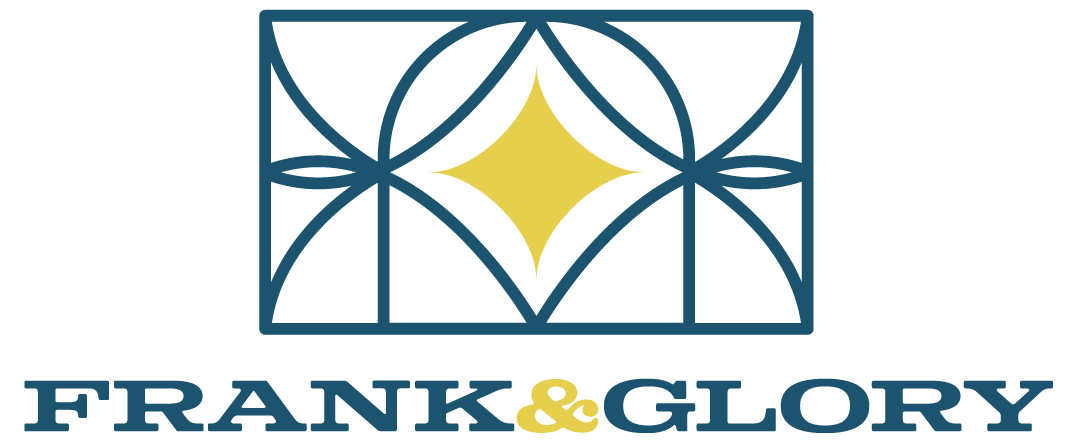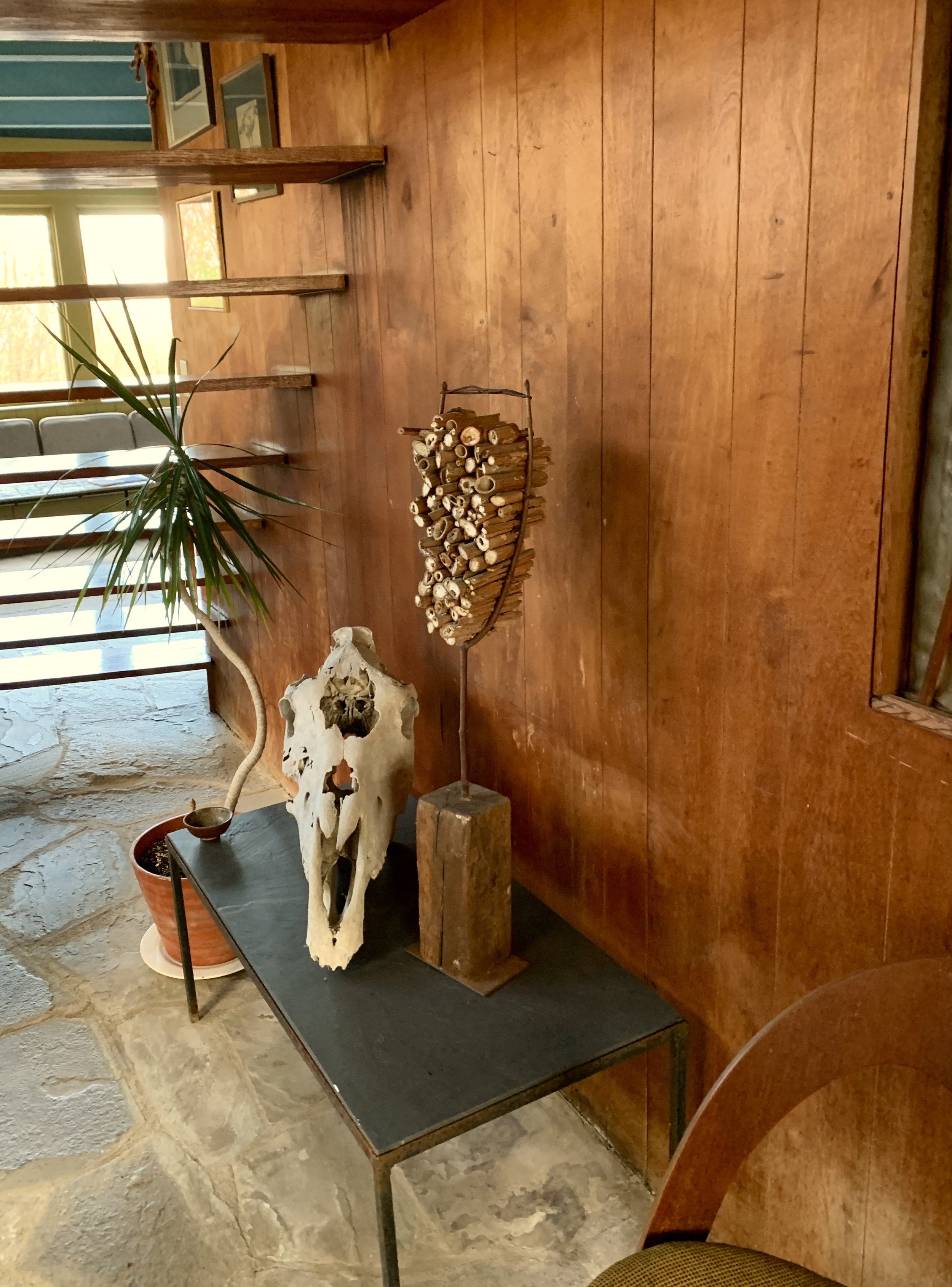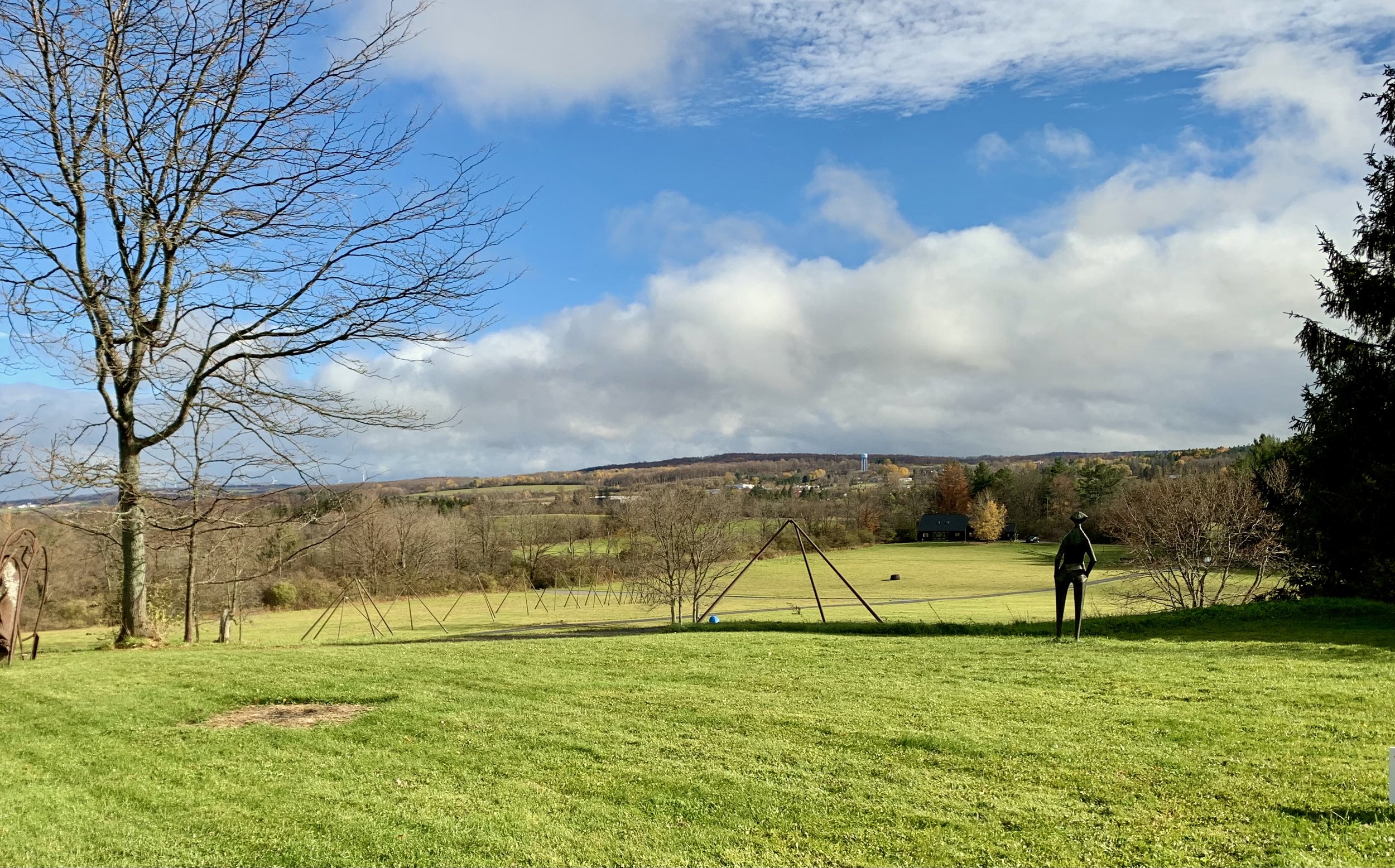Stone Quarry Hill Art Park
What are the implications of a contemporary artist residency operating an historic house museum?
Dorothy and Bob Reister founded Stone Quarry Hill Art Park (SQHAP) in the 1990s to support contemporary artists by providing the freedom to respond and engage with a landscape via installations and performances. In the mid 20th century, the Reisters constructed a home on the land that, as a practicing artist, Dorothy designed, created surfaces for, and furnished. When she died in 2017, she bequeathed her house and its contents to the nonprofit. The museum reached out to Frank + Glory to think creatively about how to use the gift.
Photo Credit Michael Appleby on 20.01.2018, https://www.museeum.com/a-large-sculpture-park-for-hiking-and-wildlife-viewing-in-a-small-new-york-town/
Introduction
In 2017, artist and arts supporter Dorothy Riester bequeathed her entire estate (including home and studio) without limitations to Stone Quarry Hill Art Park (SQHAP), an organization she and her husband founded in 1991. After a few experiments with interpretation of the buildings and contents and some changes in leadership, Stone Quarry Hill Art Park (SQHAP) sought Frank & Glory’s assistance to think more deeply about using Riester’s bequest toward the mission of the organization in an operationally sustainable way.
In this scenario, Frank & Glory proposed a General Collection Assessment which would provide broad baseline information about the contents of Hilltop House and recommend goals and action steps to address SQHAP’s areas of interest. The process could also surface other areas for concern, improvement, or opportunities for proactive planning.
The assessment provided three components:
On-site Visit
Document Review
Conversations with Key Stakeholders
These components are then assembled into a final Site Visit Report.
Project Timeline:
2-3 months
Client Background
Since the 1970s, artists have gathered to be inspired by and create installations on the grounds now known as Stone Quarry Hill Art Park (SQHAP). Located near Cazenovia, NY, Dorothy Riester and her husband Bob founded SQHAP in 1991 to support contemporary artists by hosting artist residencies and inviting visitors to explore the grounds every day of the year.
A core element of SQHAP’s ecosystem is the house Reister and her husband designed and furnished. Aptly named, Hilltop House sits on a hill overlooking the grounds and served as a home until Dorothy’s death. Listed on the National register of Historic Places and the National trust for Historic Preservations’ Historic Artists’ Homes and Studios Program, Hilltop House was bequeathed without restriction to SQHAP in 2017.
Photos taken by Erin Richardson during the site visit.
Scope of Services
Riester's bequest of her home and studio (with all of its contents), without specific instructions for its ultimate use, prompted SQHAP to consider exactly how it would like to use bequest to further the mission of the organization. To do this, Frank & Glory proposed a General Collection Assessment which included the following services:
ON-SITE VISIT
This visit provided a general overview of the organization materials at Hilltop House including the condition of furnishings, art, and decorative objects visible to the public, those inside case furniture and closets. The visit also presented an opportunity to understand the entire organization and the house in context with the land, a key consideration for the Riester’s architectural and decorative choices.
DOCUMENT REVIEW
Evaluation of existing policies, procedure manuals, or other documentation about SQHAP's relationship with installations on its property including loan documentation, exhibition development plans, and long-range planning for the acreage, house and studio, and other facilities. This evaluation extended to compliance documents and processes for collecting organizations operating in New York State and helped to understand SQHAP's history and inform recommendations.
CONVERSATIONS WITH KEY STAFF, VOLUNTEERS, AND OTHER STAKEHOLDERS
An organization and its assets are best known by its users. Discussions with current and former staff and volunteers, and board members actively engaged with the collection provided key insight into how the collection is or might be developed, managed, and used.
Deliverables
SITE VISIT REPORT
A final report summarized the work undertaken during the assessment, provided a status report for the contents of Hilltop House as it is now, and provided recommendations for future steps to improve the quality, preservation, management, and use of the materials.
Photo taken by Erin Richardson during the site visit.
Reflections
Uniquely, many of the home's surfaces were created by Riester (e.g.: relief sculpture surface treatments on walls, tiles in the kitchen) and it is furnished with a few pieces by notable mid-century modern designers (Saarinen, Bertoia, Jacobsen). Moreover, the home contains the accumulated "stuff of life" from the Riester's 70-year occupancy. This presented a peculiar challenge for SQHAP when exploring how to move forward in a manner that will best support the mission of the organization, Riester's legacy, and the organization’s capacity to sustain its operations.
CONCLUSION
At the conclusion of our findings, we provided two main recommendations, each presented to the client with benefits and drawbacks.:
Option 1: use the house as the rest of the property in keeping with Dorothy’s desire to support living contemporary artists. This option would necessitate making the home functional as a temporary residence rather than, or in addition to, a space open to the public.
Option 2: Charter SQHAP as a museum in New York State, and consider the contents of Dorothy’s house as collections worthy of preservation for the long term.
Frank & Glory also provided preparatory steps that would add value to the organization regardless of the future direction, including seeking external partners in preservation.





